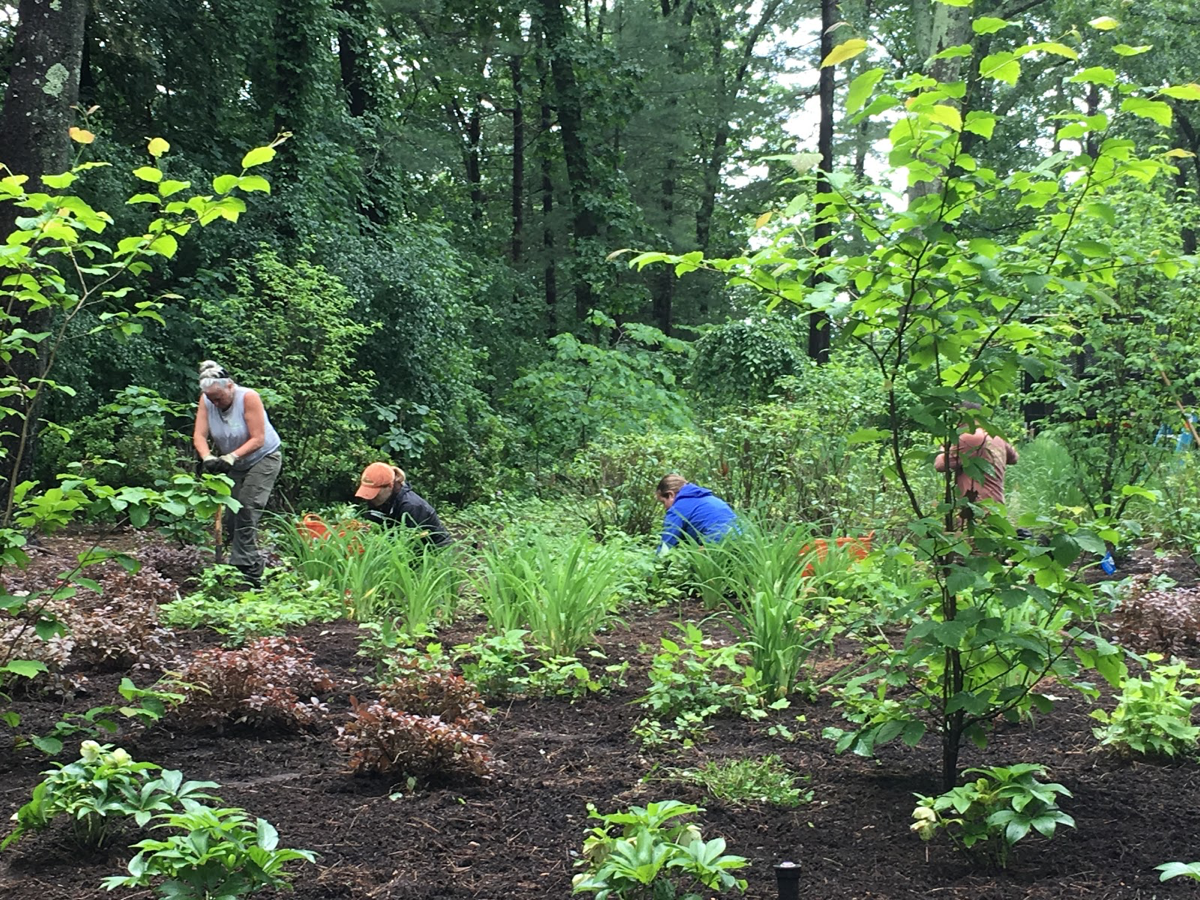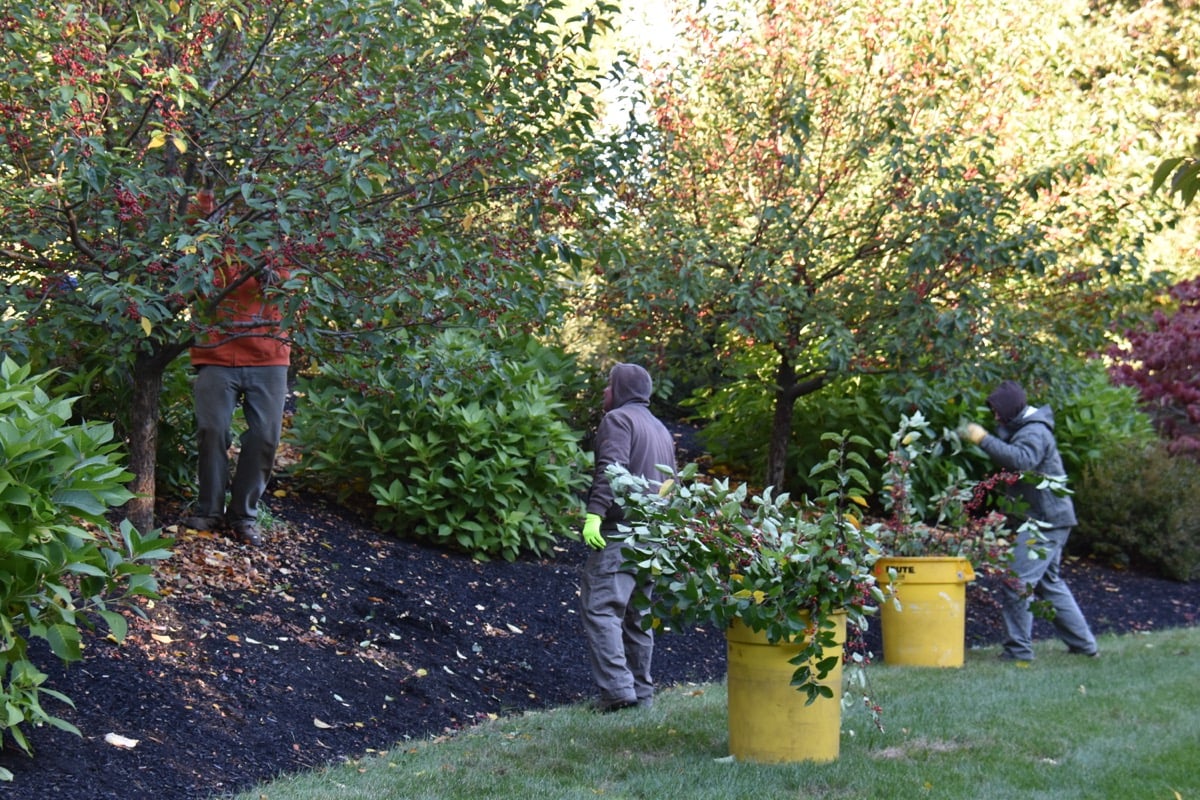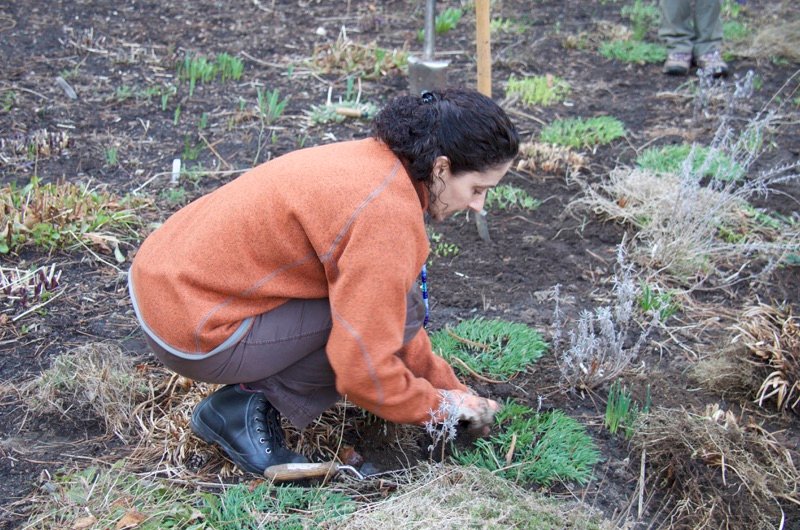Most traditional landscape management has been based on principles of control rather than cooperation. Historically, gardeners have worked hard to achieve what they considered “natural perfection.” Lush, well-tended flower beds and perfectly-shaped shrubs and hedges bordering thick, green lawns.
Of course, all this “perfection and control” takes a terrible toll – on the gardener and the landscape. Hours of backbreaking labor is needed to weed, prune, water, and tend needy plants that don’t really want to be where they’re planted. Tons of herbicides, pesticides, and fertilizers are applied in order to keep everything and everybody in line. As a result, landscapes are all too often ecological nightmares.
Today, it’s appropriate to consider entering into a new relationship with the natural world. Taking a step away, if you will, from everything that we’ve collectively (mis)learned about “proper garden care” and how a cultivated landscape should look. Gardens need to be less wasteful and more environmentally benign.
So how can we have sustainable landscapes and gardens that sit lightly on the earth, recycling as many resources as possible and needing little intervention? What happens when we give preference to plants that thrive in the climate, soil type, and water distribution pattern our bioregions naturally offer? What if we place plants where their natural attributes (such as mature size and shape) are an asset, not a liability, to our design? Can we make gardens that grow old gracefully with us and are more rewarding than demanding?
The short answer is “yes.”
It all starts with considering the environment in general and then the unique, mini-environment of your particular corner of nature and the landscape it occupies. Let’s take a closer look at three tips that can help you have your very own well-tended landscape without all the self-inflicted craziness:
1. Design matters!
What project have you ever been involved in that didn’t take some level of attention to planning? It’s funny how so many landscapes are created on a whim and a trip to the nursery. I hate to break the news – no long-term success will come from this behavior. Short-term fixes maybe, but nothing that will really last. Why is that?
Well for starters, let’s take the classic front foundation planting, most all trees and shrubs will NOT fit when planted along the foundation of a house. Meaning…if you plant the plant, it lives, it thrives, it grows…it will OUTGROW the space you’ve given it. It’s just a simple fact.
I can’t tell you how many times I’ve seen hemlocks (little 5 foot trees) planted lovingly on the corner of a house, only to see that plant sheared to within an inch of its life every year until one day it is a twig-filled blob of a plant. The plant looked great in the nursery – all fluffy and lush – a perfect anchor for the house. But no one stops to realize that little hemlock wants to be 90 feet tall and 40 feet wide. A plant that wants to be that big will, once established, grow quickly and aggressively. That means a lot of work for the homeowner or landscaper charged with keeping all that energy controlled and in check.
The lesson is this: what you plant matters. Knowing the plant's characteristics matter. Understanding how one plant will interact with another matters. Once you know these things, you can mindfully choose plants and locations for those plants that make sense in the short-term, and in the long-term with the right kind of care.

2. Aftercare is Critical!
Once a landscape is installed, it needs care. Don’t be fooled – that is why it’s called the “managed” landscape. Whether it’s a full master plan or a single plant, that moment after planting is critical.
There are three stages of aftercare that need your attention.
Acclimation – this is the first days, weeks, and months after planting. The plants will be in shock initially, so your job is to monitor and administer care, as they need it. Mostly this will come in the form of water management. DON’T let a new plant struggle for water. That’s a death sentence. And don’t over water… doing it is equally bad for the plant and wasteful of this precious resource.
Establishment – this is the first year to first three years after a landscape has been installed. This is the highest maintenance stage. The younger and more herbaceous the plant, the faster it will establish. A daylily may be established after just three months. A maple tree may take three years to be fully established.
Establishment is when a plant has recovered its full root system and is growing at its normal pace. An established plant will also have more resilience to both dry spells and wet spells. It will be able to withstand some insect pressure and possibly even make it through exposure to a pathogen (if treated and cared for).
Your attention during this period of time can make or break the long-term success of a landscaped environment. The biggest task is often weeding. You want your plants to take hold without allowing weeds to infiltrate their roots. This is especially true for young perennial gardens and early groundcovers that are being established to cover the ground.
This means consistent and vigilant monitoring for weeds because once weeds infiltrate young plants, the planting will be a loss because it’s impossible to win over the weeds. Invest time early on so that you ensure low maintenance and sustainability.
Stewardship – this is the long-term care that you offer your plants over time. In the early years, this will involve training the plant through proper pruning practices – NOT shearing. For trees, we don’t prune in the first year, then lightly prune as needed in years two through ten to ensure we are shaping a strong and vibrant tree. After that, leave it alone if possible. When you choose the right tree for the right place, you don’t need to be pruning it forever. For example, avoid planting a tree up against a wall of a house or under utility wires because that ensures that the plant will need pruning attention for the long haul.
Stewardship is also the ongoing monitoring and management of unwanted plants, like weeds, so that plants can continue to mature without weeds invading their root systems. I wish I could say weeding goes away entirely, but I can’t. It can be greatly reduced with dense plantings and proper mulching practices, but anyone who tells you that the managed landscape needs no weeding is lying to you.

3. Timing is Everything!
When you do things matters in the landscape. Remember, this is a living, breathing collection of organisms. You can’t plant in the heat of summer and not expect heat stress. You can’t prune just before the plant is going to bloom and then expect vibrant flowering. You can’t fertilize when a plant is dehydrated and expect any success. Get the timing right and align your efforts with the natural rhythms of nature and you will have far better results.
Before you prune, – look up the plant type you are pruning. The Internet is wonderful! You can find almost anything on it these days. There is no excuse for pruning a lilac or a rhododendron at the wrong time of the year. Simply Google “what’s the right time to prune a lilac?” and voila, you have an answer. Now, I’m over -simplifying because pruning is an art and a science that takes more than just timing to get it right, so proceed with caution and respect for the plants before you start hacking away at them.
Before you fertilize ask; “is it needed?” Are you just reacting to the latest big box store commercial? Have you tested your soil to determine what’s needed? Are your plants hydrated? NEVER waste money on applying fertilizer to dehydrated plants, including your lawn. Lawn companies that are fertilizing your lawn when it is brown and dried up are wasting your money. That timing is really bad and can cause harm. Just think…if you were totally parched …would you appreciate a baked potato being stuffed down your throat? I’m thinking not! You’d much prefer a tall glass of water!
Before you plant, do you have the ability to follow up with watering and weeding? Or are you heading out on vacation the next weekend? Is it going to be 80 degrees for the next week while you’re gone? Hmmm, maybe not the right timing!
Timing is everything, so consider what you want to accomplish and ask – “is this action right for the plant and the environment? Can I offer the right kind of follow up?” And if you don’t know the answer, ask a seasoned plant expert for help.
The moral of these three tips is simple: Plan, Follow-up, Time it well. When you do that, you make great strides toward your landscape success. AND, you ensure that the investment of time and money are not wasted. The beauty of the landscape is that nature is a sure thing. When you invest well, the payback is ten ten-fold. When you cut corners, the bottom almost always falls out…maybe not tomorrow…but trust me… you CAN’T fool Mother Nature!







Leave a comment